Setting up your bearded dragons home well will provide you with easy access to your pet and will lay the foundations to contribute to a long, healthy and enriched life. Here are six steps to create the best housing setup:
- Select the best type of home.
- Indoors, outdoors and materials (i.e. wood, glass, PVC, acrylic).
- Choose the right size of house including meeting minimum regulations for Australian reptile keepers.
- Select and set up lights, heating and thermostat.
- Types of lighting, heating
- Lamp covers, reflectors, dome fittings
- Thermostats
- Set up monitoring of the environment.
- Thermometers and thermostats
- Choose the best substrates (See the post on Best Substrate for Bearded Dragons)
- Set up the best accessories, the best are free!
- Set up basking and perching sites. Groundcover and feeding area. Branches, vines, rocks, burrows and hides, food and water bowls.
How to Setup Your Bearded Dragons House
Indoor and Outdoor Housing
As pets, bearded dragons are typically kept indoors. This makes it much easier to enjoy their company and control their environment. However, indoor housing is likely to be restricted on size far more than outdoor depending on your residence. On the other hand, access to unfiltered UVB can make up for mistakes or inadequacies of indoor lighting.
Rather than choose from indoors or outdoors, it would be better to provide both. The outdoors enclosure may be a temporary setup only used during appropriate weather.
Can I Keep my Bearded Dragon Outside?
You can keep your bearded dragon outside in the appropriate climate. All their requirements, such as for heat and UVB, still need to be provided only outdoors, those elements are expected to come from the natural environment.
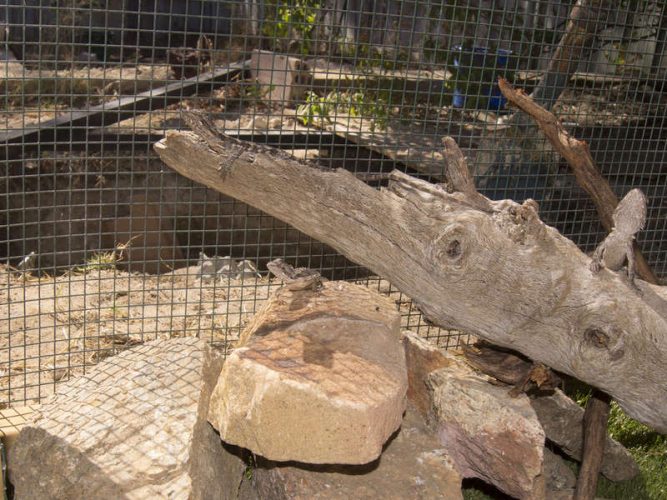
One of the major benefits of providing accomodation outdoors is the access to direct unfiltered sunlight can counteract any issues with UVB lighting indoors.
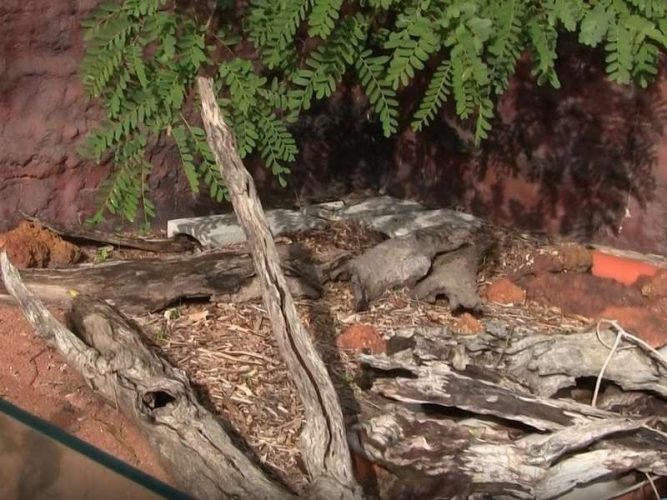
Outdoor enclosures can be built in to the environment or be something easily transportable to move around the garden.

Factors to consider in choice of housing
The following provides a checklist of some basic requirements the housing should meet:
- How easily it can be cleaned including disinfecting. Outdoor enclosures have different requirements which are discussed in this article.
- How easily the animal can be accessed. Inadequate access can lead to frustration and will certainly be problematic if the animal is injured or ill.
- How much room there is to move both vertically. Bearded dragons are semi arboreal, unfortunately something often not taken into consideration. They need branches and perhaps vines to climb.
- How much floor surface there is to move without objects and room to set up accessories.
- Access to temperature gradients, humidity levels and lighting cycles suitable for relevant factors including biological and seasonal.
- Good air circulation especially in climates with high humidity. Two main factors are height of the enclosure and the material used to create the enclosure. Vents should be at the sides and top of the enclosure. Glass enclosures are not generally designed with good air circulation.
- Free of pests.
- Free from distress including other bearded dragons.
- How safe is the animal from cats or other possible sources of harm when you aren’t looking.
- Surfaces and equipment cannot cause injury including cuts, abrasions and burns.
- Ease of securing accessories to prevent harm from falls (both accessories falling on the reptile or the accessory falling while the animal is on it).
- Prevents access to harmful substances.
- Escape proof.
What is the Best Type of House for Bearded Dragons?
The best type of house for bearded dragons indoors can be made of wood, melamine and glass. Glass does not provide the same flexibility that wood and melamine do and there are some health concerns that may be exaggerated by glass due to lack of air circulation.
Wood and Melamine Housing
Wood and melamine are great materials for a bearded dragon habitat. However, as it can soak up fluids the surface will likely need some waterproofing.
Pros:
- Cheap entry point.
- Sealed panels (melamine) are easy to clean.
- Easy to fix accessories securely so they will not fall on the occupant.
- Easily fix new levels (shelf) within the housing to make greater use of vertical space.
- Easy to add further ventilation if needed.
- Some privacy/security provided by solid walls (cannot be seen through).
- Roof is likely to be solid. Particularly useful where cats are in the house that like sitting on top of warm enclosures. (Mesh tops are not always so robust)
Cons:
- Melamine edges and wood require sealing.
- May be difficult to disinfect the wood well.
- Readily available sizes are small.
- The 360 degree view may result in the animal becoming stressed if no protection is provided.
- Not a good insulator (doesn’t keep heat in well).
- Some sides of the housing will be solid impacting viewing from multiple angles.
- Can be heavy.

Are glass tanks good for bearded dragons?
Glass tanks (aka vivarium) are not necessarily good for bearded dragons. They are very popular which is driven by manufacturers who can mass produce standardised sizes at low cost making them an easy entry point for enthusiasts. However, the potential to impact health in the long term needs to be assessed.
Pros:
- Glass doesn’t scratch easily.
- Waterproof, glass does a fabulous job at keeping in liquids and gasses.
- 360 degree view of the animal if no barriers are provided.
- Easily cleaned and disinfected.
Cons:
- Some reptiles have problems with clear glass and will glass surf, rub their noses on it trying to get out (Wilkinson 2016).
- Glass reflects and this can cause distress to the bearded dragon when it cannot tell the difference between its own reflection and that of another bearded dragon.
- Traps moisture and gases which can contribute to health issues. Moisture adds to humidity and high humidity must be avoided for bearded dragon’s.
- Difficult to add further ventilation to. Ventilation is often inadequate for circulating reasonable volumes of air even if the top is made of mesh. Excessive humidity is quite problematic and it is really difficult to reduce excessive humidity, it is best to avoid.
- Difficult to attach accessories safely. Typically limited to suction caps which do not always stick.
- Often the readily available sizes are too small.
- The 360 degree view may result in the animal becoming stressed if no protection is provided.
- Not a good insulator (doesn’t keep heat in well).
- Typically come with mesh tops can easily be broken through.
Note: there is additional information relating to glass tanks for bearded dragons below.
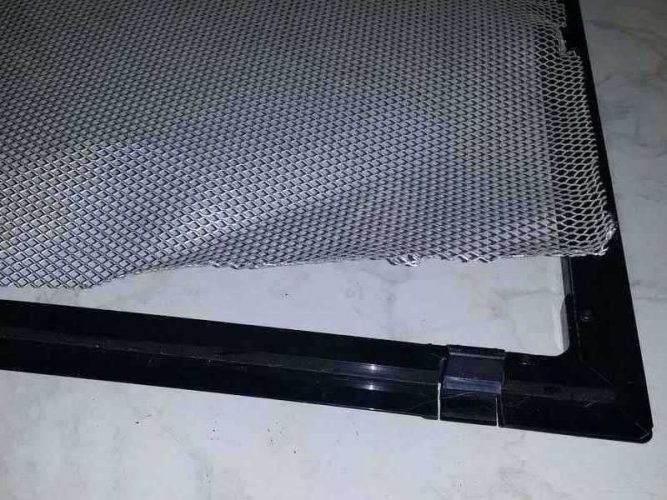
PVC Plastic Cages for Bearded Dragons
Manufacturers are venturing into plastic cages which are a lighter option than any discussed so far. The quality of the plastic cage will vary with supplier.
No one is advertising recycled plastic cages but perhaps in the near future this will become more popular.
Pros:
- Waterproof.
- Keeps in liquids and gasses.
- Easily cleaned and disinfected.
- Easy to fix accessories securely so they will not fall on the occupant.
- Easy to add further ventilation if needed.
- Some privacy/security provided by solid walls (cannot be seen through).
- Roof is likely to be solid. Particularly useful was a barrier to cats.
Cons:
- Often expensive.
- Scratch easily detracting from its aesthetic appeal over time.
- May bend over time or with continued exposure to heat. (This is not necessarily true of a good design with well placed support.)
What Size House Does my Bearded Dragon Need?
In Australia reptile keepers must comply with the Code of Practices related to their state which includes the size of housing that must be provided to reptiles. Clearly reptile keepers outside of Australia are not required to follow the regulations, however they make for a well founded guide.
The most generous allowance for minimum size house that bearded dragons must be provided, out of the three states assessed in this article, is set by the Victorian state government at 100 cm long by 80 cm wide (39.3″ long by 23.6″ wide). Queensland adds to that by requiring the height of the housing to be 80 cm tall (31.4″ high).
Large housing has been linked to better physical health and less injuries in reptiles (Wilkinson 2015).
Australian State Codes of Practice
Victoria Government requirements for bearded dragons
The Victorian State Government’s Code of Practice for the Welfare of Animals – Private Keeping of Reptiles sets the minimum size house that bearded dragons must be provided is:
- Length to be at least 2.5 x the lizards length (head to vent)
- Width to be at least 2 x
For each additional bearded dragon a further 20% floor space must be provided.
For the calculations the bearded dragons size is set to 40 cm from head to vent as this is the length other states have used for sizing. This means the minimum size of housing would equate to 75 cm long by 60 cm wide (39.3″ long by 23.6″ wide). There is no mention directly to height of the enclosure. This article covers height in Housing Height section below.
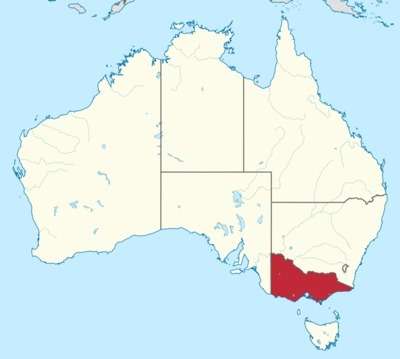
Image from Wikimedia Commons licenced under the Creative Commons Attribution-Share Alike 3.0 Unported)
Queensland Government requirements for bearded dragons
The Queensland Code of Practice – Captive reptile and amphibian husbandry is quite clear. It states the minimum size house for 2 to 3 bearded dragons is 100 cm by 150 cm x 80 cm (39″ x 59″ x 31″). Note that it does not provide dimensions for a single bearded dragon.

Image from Wikimedia Commons licenced under the Creative Commons Attribution-Share Alike 3.0 Unported)
New South Wales Government requirements for bearded dragons
The New South Wales Code of Practice for the Keeping of Reptiles states that for the Pogona barbata and Pogona vitticeps the minimum floor area must be 0.375m2. In the enclosure size calculations (Appendix B) for the largest of the Pogona species is set at 75 cm by 50 cm (29.5″ by 19.6″). For a second bearded dragon in the same enclosure a further 50% more space needs to be provided.
The enclosures shortest dimension cannot be any smaller than the length of the largest lizard from snout to vent, as is the case for all the Codes of Practice.

Image from Wikimedia Commons licenced under the Creative Commons Attribution-Share Alike 3.0 Unported)
Minimum requirements for size of bearded dragon house
The tables below compare the floor space requirements for bearded dragons for each state against each other.
Looking at the most generous of the states for floor space, Victoria and Queensland are in the lead.
The minimum requirements for the size of house for a bearded dragon in Victoria is 75 cm by 60 cm (29.5″ by 23.6″).
The minimum requirements for the size of house for two bearded dragons together is Queensland with a floor space of 100 cm x 150 cm with a height of 80 cm (39.3″ by 59″ by 31.4″).
| CODE OF PRACTICE | LENGTH | WIDTH | HEIGHT | NUMBER OF BEARDED DRAGONS |
|---|---|---|---|---|
| Victorian State Government | 100 cm | 80 cm | 1 | |
| New South Wales Government | 75 cm | 50 cm | 1 | |
| Victorian State Government | 100 cm | 80 cm | 2 | |
| Queensland Government* | 100 cm | 150 cm | 80 cm | 2 |
| New South Wales Government | 112 cm | 75 cm | 2 |
| CODE OF PRACTICE | LENGTH | WIDTH | HEIGHT | NUMBER OF BEARDED DRAGONS |
|---|---|---|---|---|
| Victorian State Government | 39.3″ | 23.6″ | – | 1 |
| New South Wales Government* | 29.5″ | 19.6″ | – | 1 |
| Victorian State Government | 39.3″ | 23.6″ | – | 2 |
| Queensland Government | 39.3″ | 59″ | 31.4″ | 2 |
| New South Wales Government* | 37″ | 29.5″ | – | 2 |
The minimum requirements for the size of housing for bearded dragons are not particularly generous especially when you consider that in their native environment there are days that they can travel hundreds of meters. It will not take much effort to beat the small dimensions with something larger.
“…many companion lizards are housed in minimalistic enclosures where convenience and simply keeping the animal alive is the main priority.”
The Animal Behavior Management Alliance 2015 Annual Conference “See the World through Behavior” , Denmark, www.theabma.org
Small versus Large Housing
Large enclosures and natural accessories will provide a good foundation for encouraging natural behaviours. A poor environment can result in behavioral issues such as self harm, unnaturally increased or decreased appetite and repetitive movements. This can include rostral damage (snout rubbing), glass surfing and so on.
Small environments will:
- Harbour a higher concentration of pathogens encouraging disease and creating more work for you to clean.
- Not support a healthy thermal gradient.
There is no limit in the size of house for your bearded dragon indoors or outdoors. Six foot indoor housing is a great starting size, even if you are rearing a juvenile.
There is no need to start a baby bearded dragon off in small sized housing. They are perfectly evolved to be able to care for themselves in the vast expanses of Australia immediately after hatching. Providing the youngster a 6 foot enclosure will not be a problem.
Don’t spend your money on small enclosures for babies and juveniles that will grow out of them faster than you will want to replace the housing.
How high should my bearded dragons house be
The height of the housing needs to provide for the bearded dragons, often over looked, semi-arboreal nature.
The bearded dragons species vary in their habitat in the wild and their native territory clearly has some impact on their natural behaviours. We know from research conducted by Wotherspoon that the Pogona barbata is quite semi-arboreal. To accommodates its natural behaviours the height of the housing needs to allow for upright branches.
From the Code of Practices point of view, only Queensland has directly addressed this. Others have been a little more vague by referring to allowing natural behaviours, however they have also placed bearded dragons in the terrestrial basket rather than semi arboreal.
How high the bearded dragons house should be (for Queensland) is 80 cm (31.4″). This height doesn’t provide much allowance for vertical accessories such as branches but it will be sufficient to set up a temperature gradient (heating and lighting section of this article).
“When it comes to space, there is no upper limit. It is far better for a reptile to have more space than it requires, than to require more space and not have it. Unfortunately, most reptile housing appears to based on convenience, budget and, in some cases, ignorance of the true spatial needs of reptiles.“
Scales and Tails The Welfare and Trade of Reptiles Kept as Pets in Canada
In conclusion, the best housing for bearded dragons is not a single enclosure but preferably one outdoors that provide uninhibited access to sunlight (shelter and so forth of course) and an indoor enclosure of perhaps melamine and at least 6 foot long.
Finishing off the case of using a tank for bearded dragons
Quickly back to glass tanks for bearded dragons. Now that we are clearer on the minimum size housing to be provided for bearded dragons we can close this subject off.
Comparing the common glass tank sizes which can be purchased in pet stores against the minimum housing requirements, only a few provide sufficient depth of 26.3 cm (24″). Of course this is based on the assumption that the bearded dragon reaches its standard expected size of 40 cm from snout to vent.
| US gallons | Inches L x D x H | Meets Minimum Requirements |
|---|---|---|
| 37 | 30 x 12 x 22 | No, wide but not deep enough |
| 40 (breeder) | 36 x 18 x 16 | No, wide but not deep enough |
| 45 | 36 x 13 x 24 | No, wide but not deep enough |
| 50 | 36 x 18 x 19 | No, wide but not deep enough |
| 55 | 48 x 13 x 21 | No, wide but not deep enough |
| 65 | 37 x 18 x 24 | No, wide but not deep enough |
| 90 | 48 x 18 x 24 | No, wide but not deep enough |
| 120 | 49 x 24 x 24 | Yes |
| 135 | 72 x 18 x 24 | No, wide but not deep enough |
| 150 | 60 x 24 x 24 | Yes |
| 180 | 73 x 25 x 26 | Yes |
| 200 | 96 x 24 x 20 | Yes |
This should now complete the answer to the question asked earlier in this article “are glass tanks good for bearded dragons”. With the minimum housing size in mind based off the Codes of Practices and the pros and cons given earlier, glass tanks are not a great option.
Selecting and setting up lighting and heating

There are many options available on the market for bearded dragon lighting and heating however, not all are suitable. Since the lighting and heating can be quite expensive and the pet industry has almost no regulation over it, it is vital to understand what you are buying before handing over the money, especially since you will be the one paying the vet bills if it isn’t right.
There is no room to skimp on the best lighting and heating. However, providing your bearded dragon a house out in the sunshine will go a long way to compensate for mistakes in UVB lighting.
See the post on Simplifying Lighting and Heating Setup which goes into depth on the subject.
Heat Lamps Used To Keep Pets Warm Spark 3 House Fires
If you are building your own enclosure then you will have more lighting and heating options, see the article DIY Enclosures.

Lights you Don’t Need
Do bearded dragons need blue light? No bearded dragons do not need blue lights.
Do bearded dragons need red light at night? No bearded dragons do not need red lights at night nor in the daytime.

Can I use a Heat Mat for my Bearded Dragon?
Heat mats can be used for bearded dragons however, bearded dragons naturally should be basking in the light and heat radiating down rather than heat radiating upwards.
Heat mats can have hot spots which may cause burns and the thermostats built into the heat mats are often of poor quality. Install heat mats against walls to avoid issues with hot spots. See the post on Simplifying Lighting and Heating Setup for further information.
Understanding the Factors Influencing Wattage Needed
Factors that influence the wattage (size of lamps) for the heating and lighting include:
- The dimensions of the housing
- How tall, wide and deep is the house?
- What the housing is made of
- Does the material have insulating properties such as wood or is it glass?
- How much ventilation is available? This will impact air circulation and loss of heat.
- The number of animals being housed in the same environment
- Where a pair of bearded dragons are housed together additional basking spots will be required to prevent competition.
- The climate.
- If you live in a cold climate and your house is not temperature controlled then the enclosure will require significantly more heating to attain the required temperature.
Monitoring for the Environment
Heat and moisture in the environment is measured using thermometers and hygrometers.
A minimum of 2 thermometers and 1 hygrometer should be set up in the habitat.
One thermometer is placed in the basking spot and the other in the cool area. This will provide the information you need to manage the temperature gradient that needs to be provided. For information on positioning thermometers and setting up probes go to the lighting and heating post.
Thermometers are cheap so installing multiple thermometers will provide for better management of the environment. Analog thermometers are often reliable. Putting a digital thermometer in the habitat as well can be useful.
Don’t use the flat tape style thermometers designed for sticking on aquariums.
Digital laser infrared thermometer temperature guns are a great gadget, but they are not as good as simply walking past your enclosure and noticing the temperatures registered on analogue or digital thermometers.
The placement of a hygrometer is a little more forgiving. Generally it should be place centrally in the habitat. For further information on setting up hygrometers go to Complete Guide to Humidity for Bearded Dragons.

Accessories
What furniture do i need for my bearded dragon?
The basic accessories or furniture you need for your bearded dragons house are:
- Rocks
- Branches
- Burrow
- Vines (optional)
- Bowls
Natural accessories are easily sourced and can provide much enjoyment.
The placement of the accessories is key to how well the habitat will stimulate natural behaviours which in turn reduces stress and improves health.
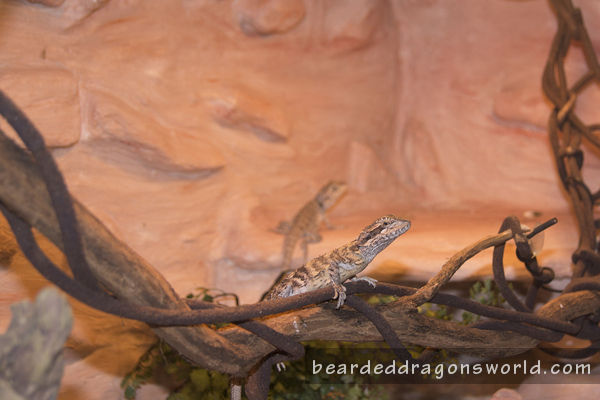
In addition, the benefits of having an aesthetically pleasing environment for humans to look at can make it quite enjoyable to just watch or interact with it.
A combination of rocks, branches and vines can create perches, basking platforms and hiding spaces. Carefully placed accessories can ensure the full use of much of the cage space and will enable the bearded dragon to settle exactly where it wants to, making the most of the available heating and lighting as it chooses to.
For more information on setting up furniture and accessories for your bearded dragon see the article Accessories and Environmental Enrichment.
References and Further Reading
- Wilkinson, S. L. Reptile Wellness Management. Veterinary Clinics of North America: Exotic Animal Practice Vol 18, Issue 2, May 2015, Pages 281-304






